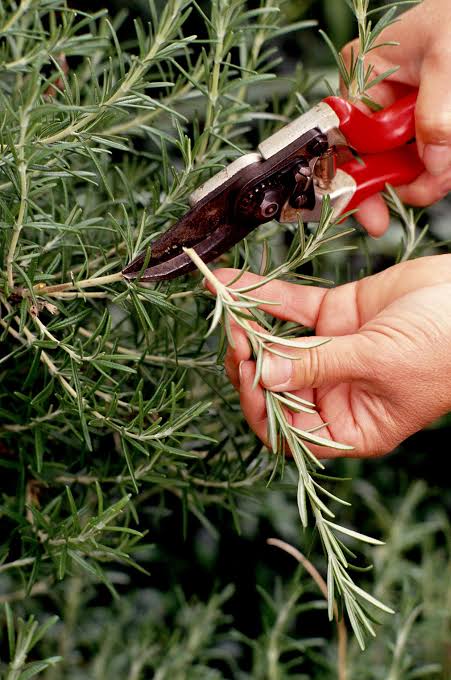Few herbs are as timeless and versatile as rosema. With its fragrant, needle-like leaves and woody stemBut while rosemary is relatively hardy, it does need the right coIn this article, you’ll learn the top tips for how to take care of rosemary plant – simple an, so you can enjoy lush,Why Grow Rosemary?Before learning the ins and outs of care, it’s worth understanding why rosemary is succCulinary Versatility – From roasted meats andFragrance & Beauty – Rosemary’s pine-like scent and evergreen appearance maPol – Its tiny purple or blue fLow Maintenance – Once established, rosemary is drought-tolerant and pest-resistantYear-Round Use –Now let’s explore the care essentials that will keep your rosemary thriving.🌞 1. Sunlight – Rosemary’s Best FriendRosemary loves the sun—lots of it. This herb thrives in at least 6–8 hours of direct sunlight daily . Outdoors, choose a south-facing garden bed or patIf your home doesn’t get enough natural light, don’t worry. You can supplement with a full-spectrum grow light placed about 6–12 inches above the plant. Rotate your rosemary every week or two to ensure even growth and prevent leggine💧 2. Watering – Less Is MoreOne of the biggest mistakes with rosemary is overwatering. While many herbs love moist soil, rosemary prefers conditions closer to its native Mediterranean climate: dry, sandy, and well-drained.Let the top inch of soil dry out completely before watering again.Water deeply, allowing excess water to drain awayAlways choose pots with drain⚠️ Pro tip: If rosemary’s leaves start turning yellow or the plant looks droopy, it may be suffering from root rot caused by soggy soil. Adjust your watering immediately.🪴 3. Soil – The Foundation of Healthy GrowthRosemary thrives best in soil that mimics its native environment. Here’s how to create the perfect soil mix:Use a light, sandy, or loamy mix.Add perlite or coarse sand for drainage.Keep the pH between 6.5–7.5 (slightly alkaline to neutral).If planting outdoors, make sure your garden bed doesn’t hold water after rain. Raised beds or pots often work best.✂️ 4. Pruning – Encourage Bushy GrowthPruning rosemary not only helps it stay compact but also promotes new growth.Lightly prune throughout the growing season by harvesting sprigs.Always cut just above a leaf node to encourage branching.Never remove more than one-third of the plant at once.Pruning also prevents rosemary from becoming woody and leggy, keeping it productive and attractive.❄️ 5. Winter Care – Protecting Rosemary from the ColdRosemary is hardy in USDA zones 7–10, but gardeners in cooler regions will need to take extra steps.Potted rosemary: Bring indoors before the first frost. Place it near a sunny window and avoid drafty spots.In-ground rosemary: Apply mulch around the base to insulate roots, and cover with frost cloth during extreme cold spells.Indoors during winter, the biggest challenge is dry air from heaters. Place a humidifier nearby or set the pot on a tray filled with water and pebbles to maintain moisture around the plant.🍂 6. Fertilizing – Light Feeding OnlyUnlike many herbs, rosemary doesn’t need heavy feeding. Too much fertilizer can actually weaken its flavor.Apply a balanced liquid fertilizer diluted to half strength once in spring.For potted plants, feed every 4–6 weeks during active growth.Skip fertilizer during winter dormancy.🐞 7. Common Problems & How to Fix ThemEven though rosemary is resilient, a few issues may arise:Powdery Mildew – A white, powdery coating on leaves, often caused by high humidity. Improve air circulation and avoid overhead watering.Spider Mites & Aphids – Tiny pests that suck sap from the plant. Treat with insecticidal soap or a neem oil spray.Root Rot – Caused by waterlogged soil. Always ensure proper drainage.With quick action, most of these problems can be resolved, allowing your roIndoor vs. Outdoor RosemaryBoth growing methods haveIndoors: Convenient year-round access, protection from frost, and decorative greenery for your home.Outdoors : Stronger growth, more blooms, and fewer humidity-related issues.Many gardeners do both—keeping a large bush outside in warm monthsCreative Uses for Fresh RosemaryOnce you’ve mastered how to take care of rosemary plant , the fun begins with using it in daily life:Culinary – Roast potatoes, lamb, or chicken with rosemary sprigs.Infusions – Create rosemary-infTea – Steep fresh sprigs for a calDIY Projects – Add rosemary to wreaths, potpourHealth Benefits – Rich in antioxidants, rosemary tea is often used for digestion and focus.Seasonal Rosemary Care CalendarTo make things even easier, here’s a quick seasonal guide:Spring : Repot containerSummer : Water deeply butFall : Reduce fertilizerWinter : Protect from frost; water sparingly indoors; increase humidity.This simple schedule ensures your rosemary staysConclusionGrowing rosemary isNow that you know these top tips for how to take care of rosemary plant – simple and , you’ll never have to struggle with weak or dying herbs again. ISo, whether you’re a seasoned gardSEO ExtrasSEO Title: 🔥Meta Description:Discover simple and effective top tips for how to take care of rosemary plant. Learn about sunlight, watering, soil, pruning, seasonal care, and more.Keyword List:how to take care of rosemary plantrosemary plant care tipsgrowing rosemary iRosemary Outdoors Carebest soil for rosemaryprune rosemary plantwinter care for rosemary

